The best Sony wide-angle lenses: widen your horizons, literally!
These are the best Sony wide-angle lenses, for full-frame A1, A7 and A9 bodies, plus E-mount APS-C A6000-series cameras
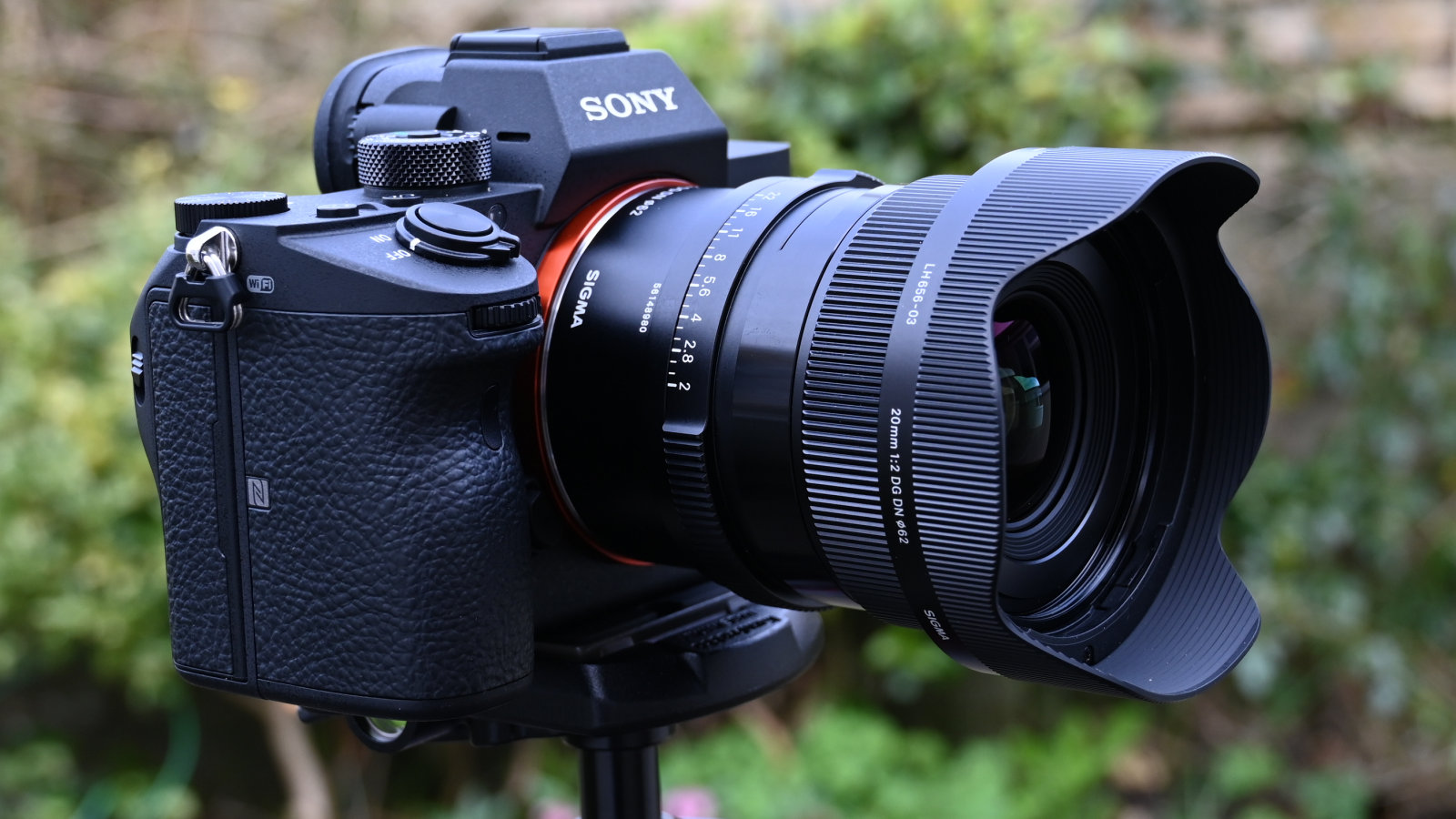
Wide-angle lenses are among my personal favorites. I find them all but essential for landscape photography, when I want to squeeze a sweeping vista into the image frame. The same goes for shooting cityscapes. The generous field of view is also really helpful when I’m taking shots of architectural interiors and can’t get as far back from the subject as I’d like, because my back is literally up against the wall. And there’s more... wide-angle lenses are great for exaggerating the apparent distance between close foreground objects and the background. I like to emphasize perspective in this way for creative effect, and the relatively generous depth of field, compared with standard and telephoto lenses, helps to keep near and distant objects looking simultaneously sharp.
A wide-angle zoom lens arguably gives the most versatility, so I can select the right focal length to suit the subject, without ‘zooming with my feet’. However, I often find that I use wide-angle zooms at or near their shortest zoom setting, so there’s a lot to be said for choosing a prime lens instead, which will often be more compact and lightweight, as well as having a faster aperture rating – more ideal for indoor shooting and for astrophotography, taking shots of a starry night sky.
More than with any other category or lens, I find it’s vital to pick the right tool for the job. If you use and APS-C Sony camera, you’ll need a wide-angle lens that’s designed specifically for that format. That’s because the 1.5x crop factor will diminish the wide-angle potential of using a full-frame compatible wide-angle lenses, which tend to have longer focal lengths. Let’s take a closer look at the best buys for a range of different needs, budgets and camera types.

Matthew Richards is a photographer and journalist who has spent years using and reviewing all manner of photo gear. He is Digital Camera World's principal printer reviewer – and has tested all the printers on this list. His expertise with equipment doesn’t end there, though. He is also an encyclopedia when it comes to all manner of cameras, camera holsters and bags, flashguns, tripods and heads, printers, papers, and inks, and just about anything imaging-related.
The Quick List
Here's a quick rundown of all the wide-angle lenses in this guide. Scroll down for a more in-depth look at the individual products.
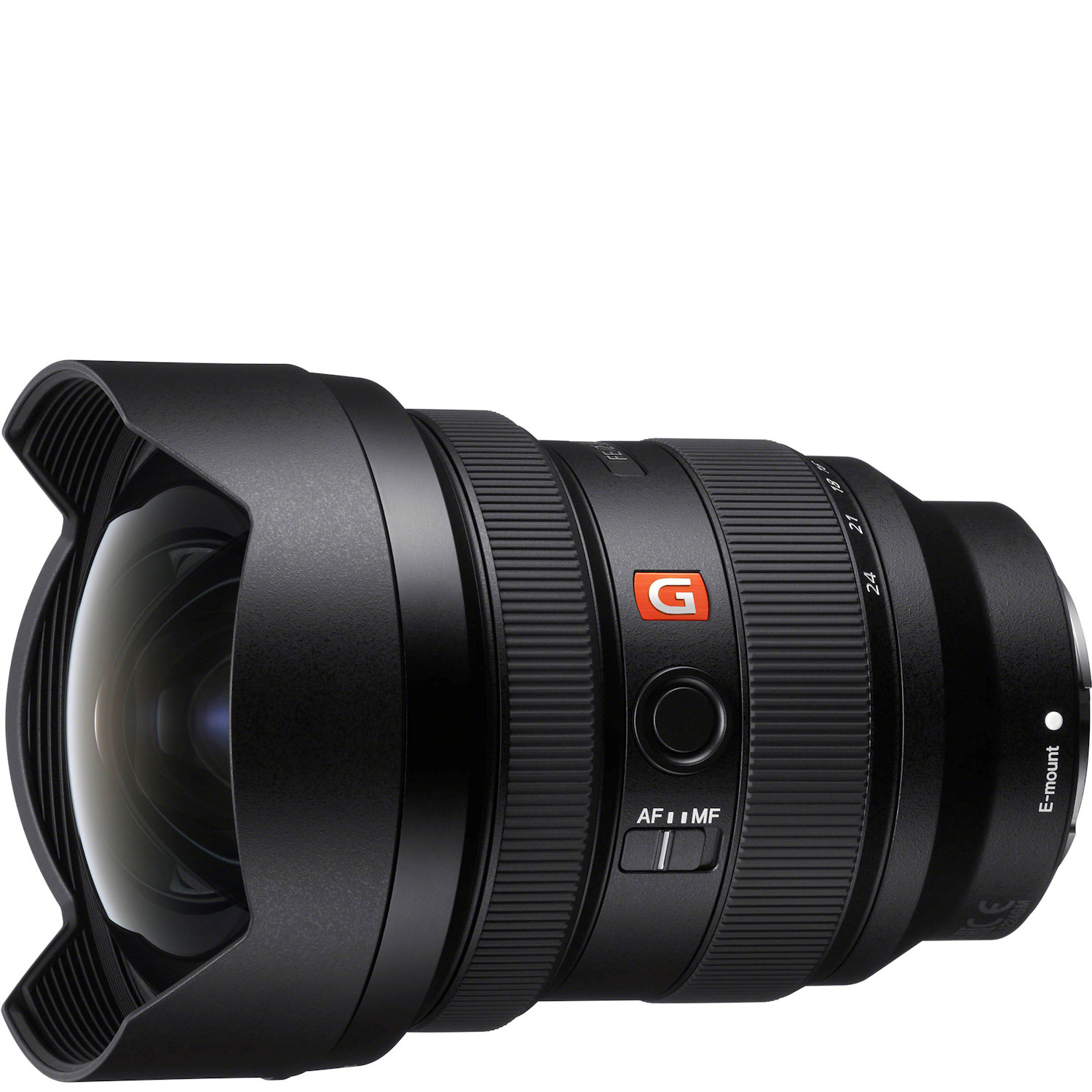
This pro-grade lens for full-frame cameras has one of the most expansive maximum viewing angles of any wide-angle zoom on the market. Top-end build quality, handling and performance make it a winner.
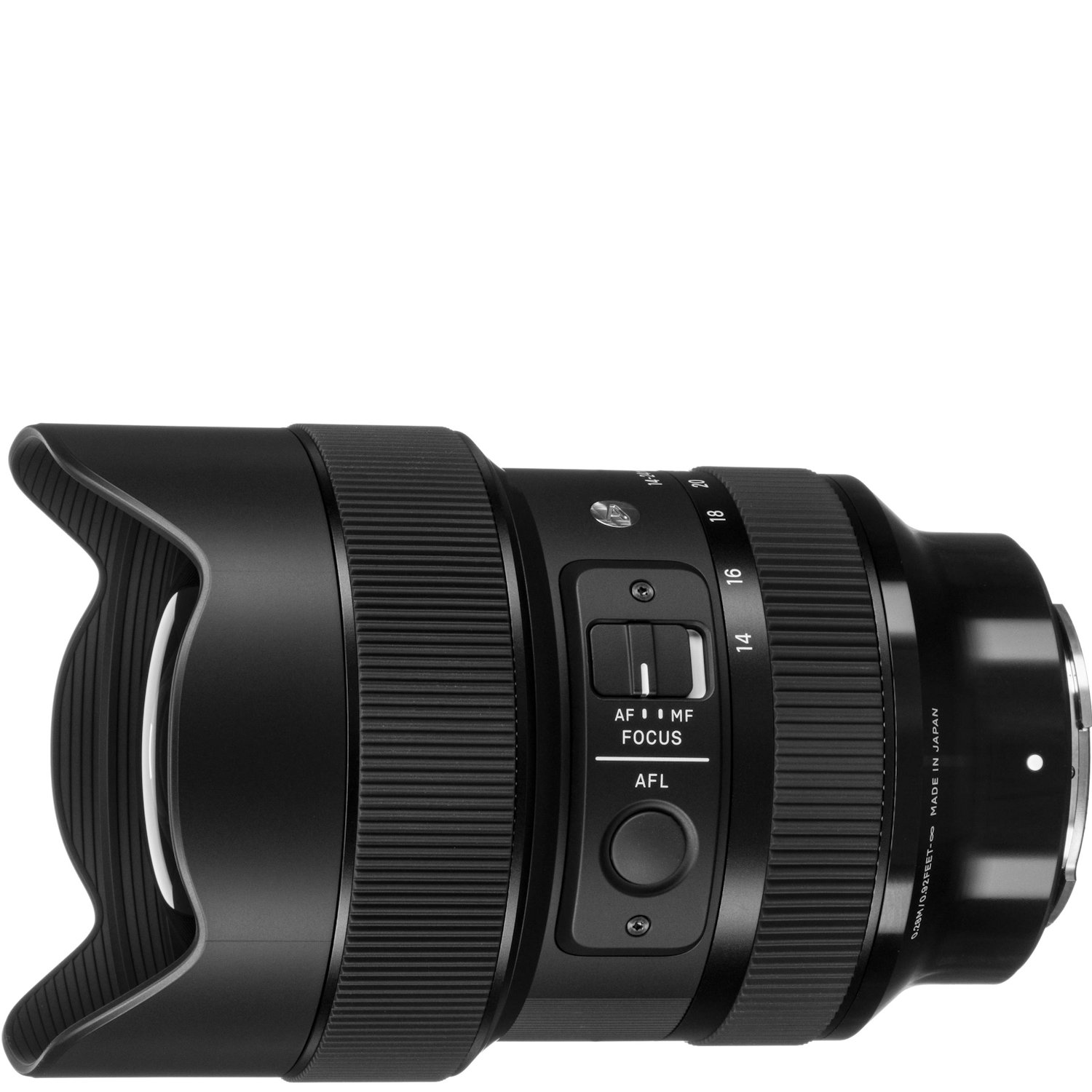
Why pay more? This ‘trinity’ f/2.8 wide-angle zoom, redesigned for Sony’s mirrorless cameras, has a cutting-edge design with premium image quality to match. It’s a great buy at the price and standout value.

Tamron rewrote the rulebook on ‘trinity’ constant f/2.8 aperture wide-angle zooms with this lens. It’s comparatively compact and lightweight, and a steal at the price, although it’s less ‘wide-angle’ than most.
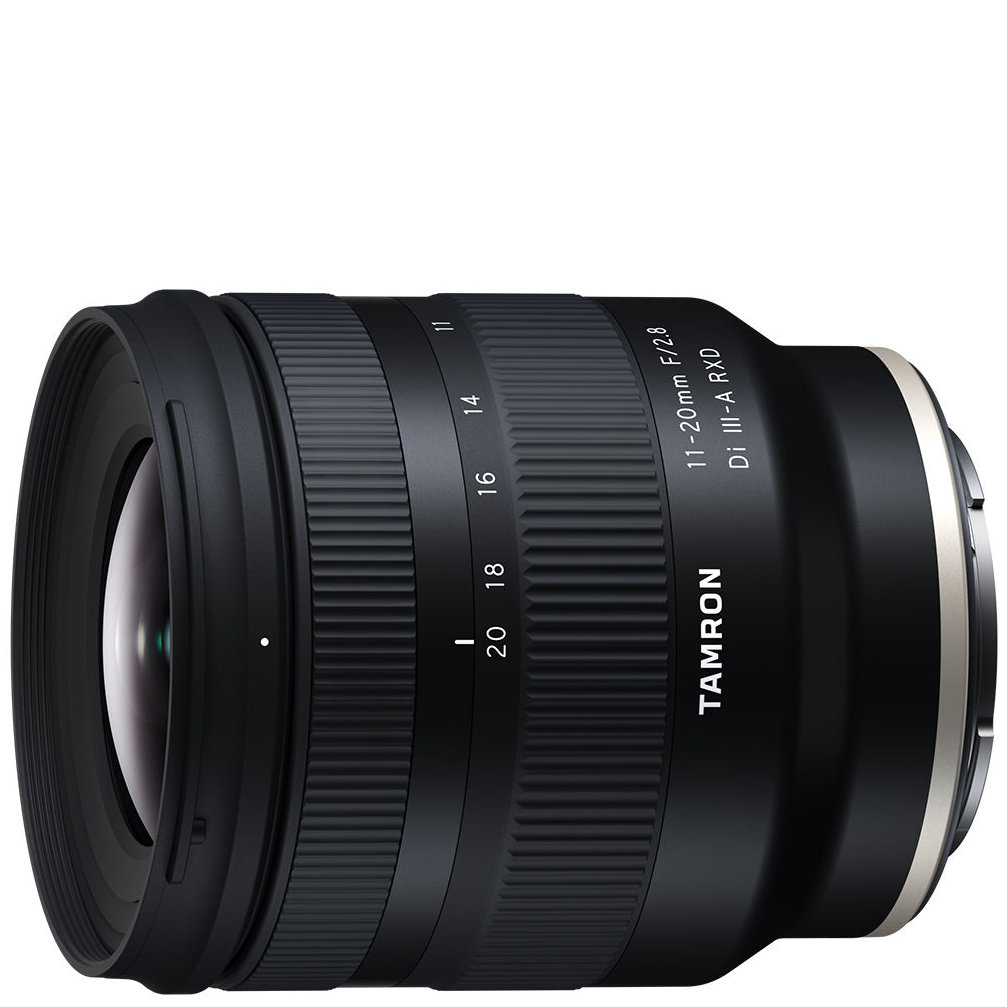
A cracking wide-angle zoom for APS-C format Sony mirrorless cameras, this one again features a constant f/2.8 aperture rating and gives an ‘effective’ zoom range of 16.5-30mm in a refreshingly compact build.
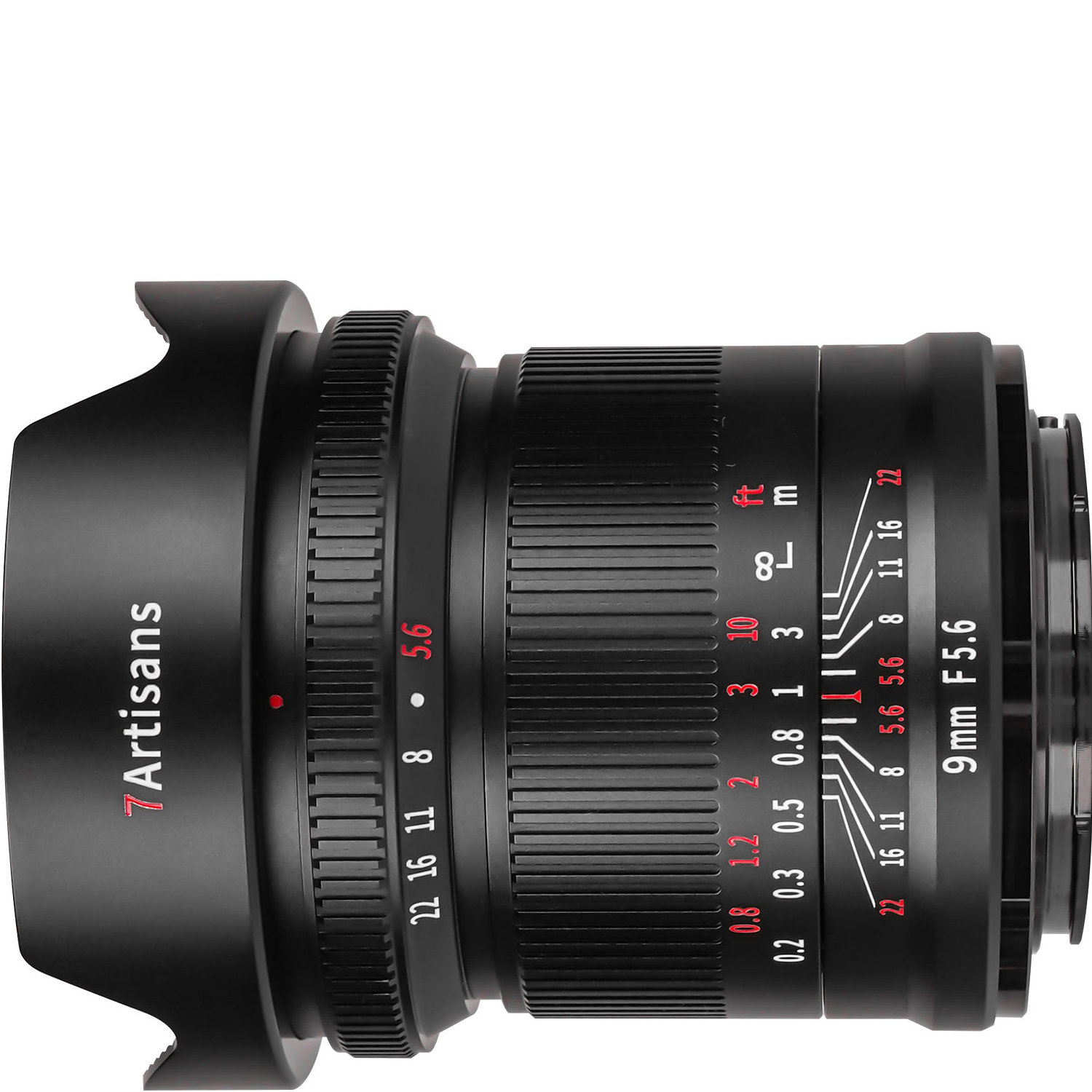
How wide can you go? This 7Artisans lens for full-frame cameras gives a monstrous 132-degree viewing angle, yet it’s still a rectilinear rather than curvilinear (fisheye) wide-angle prime, and is very compact.
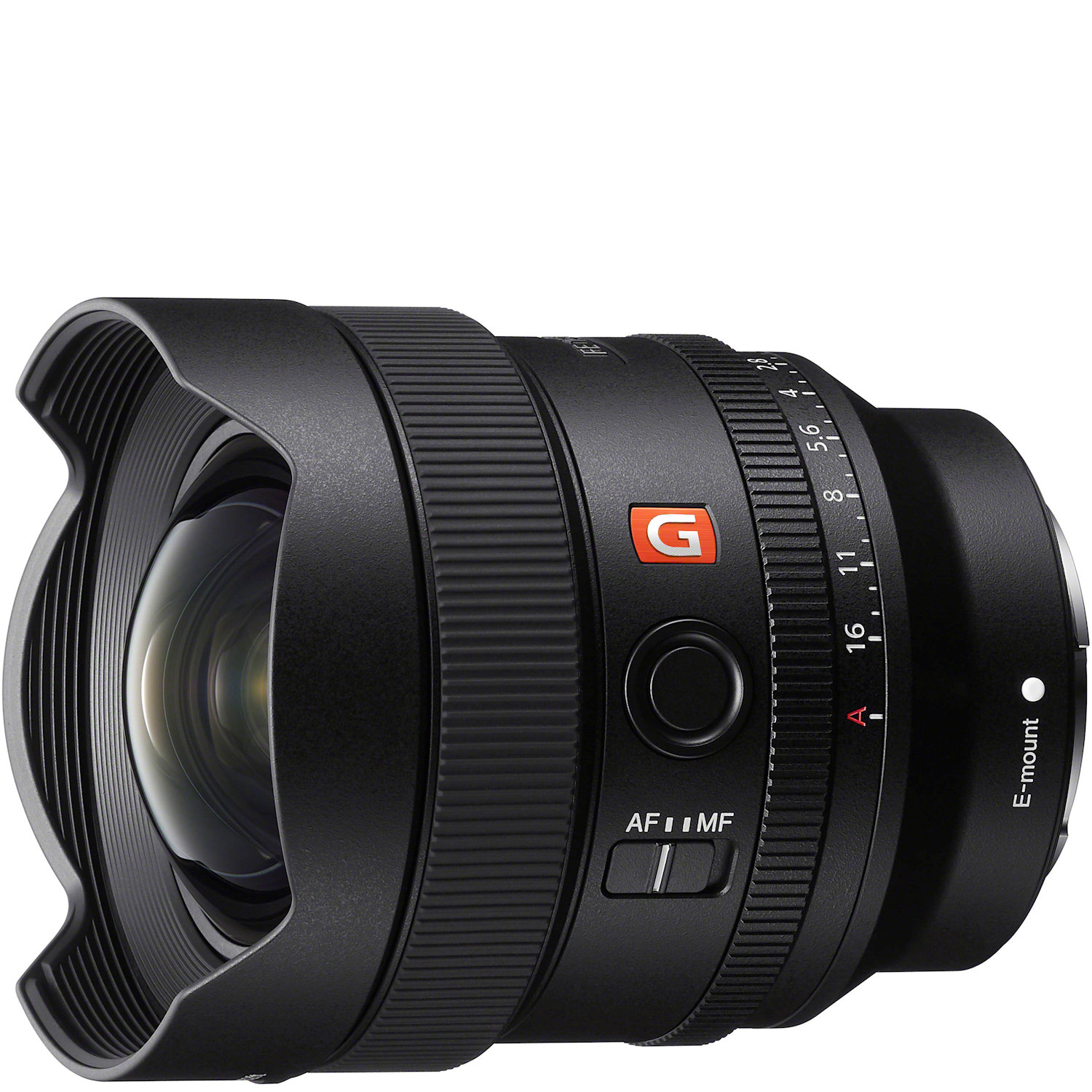
Smaller, little more than half the weight and only about half the price of the Sony FE 12-24mm F2.8 G Master, this prime lens has a faster f/1.8 aperture. It’s a great buy and makes a very good travel companion.
Load the next products ↴
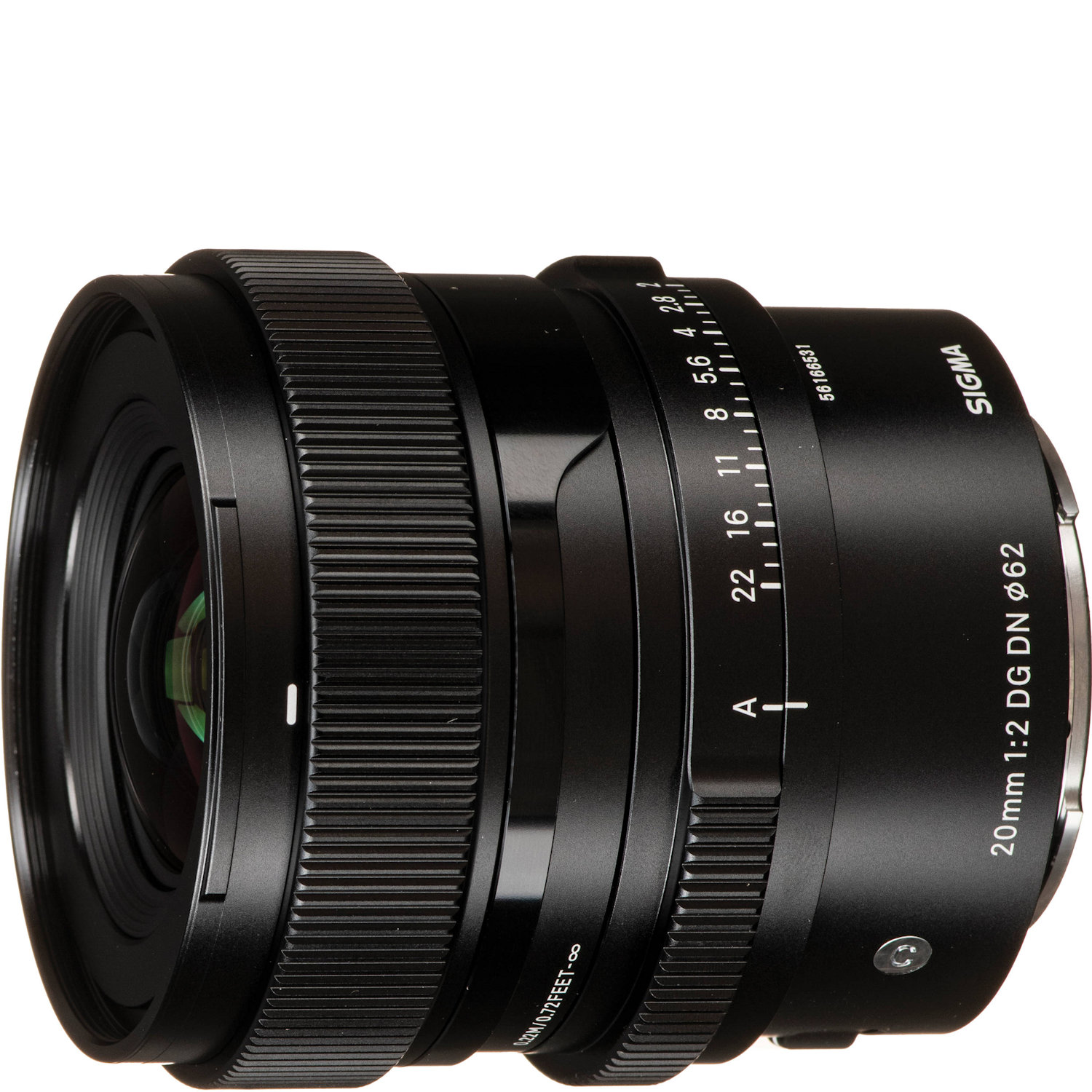
From Sigma’s ‘Contemporary’ line-up of lenses, this prime is typically compact and lightweight, and it’s also very affordable at the price. Even so, it has excellent handling characteristics and performance.
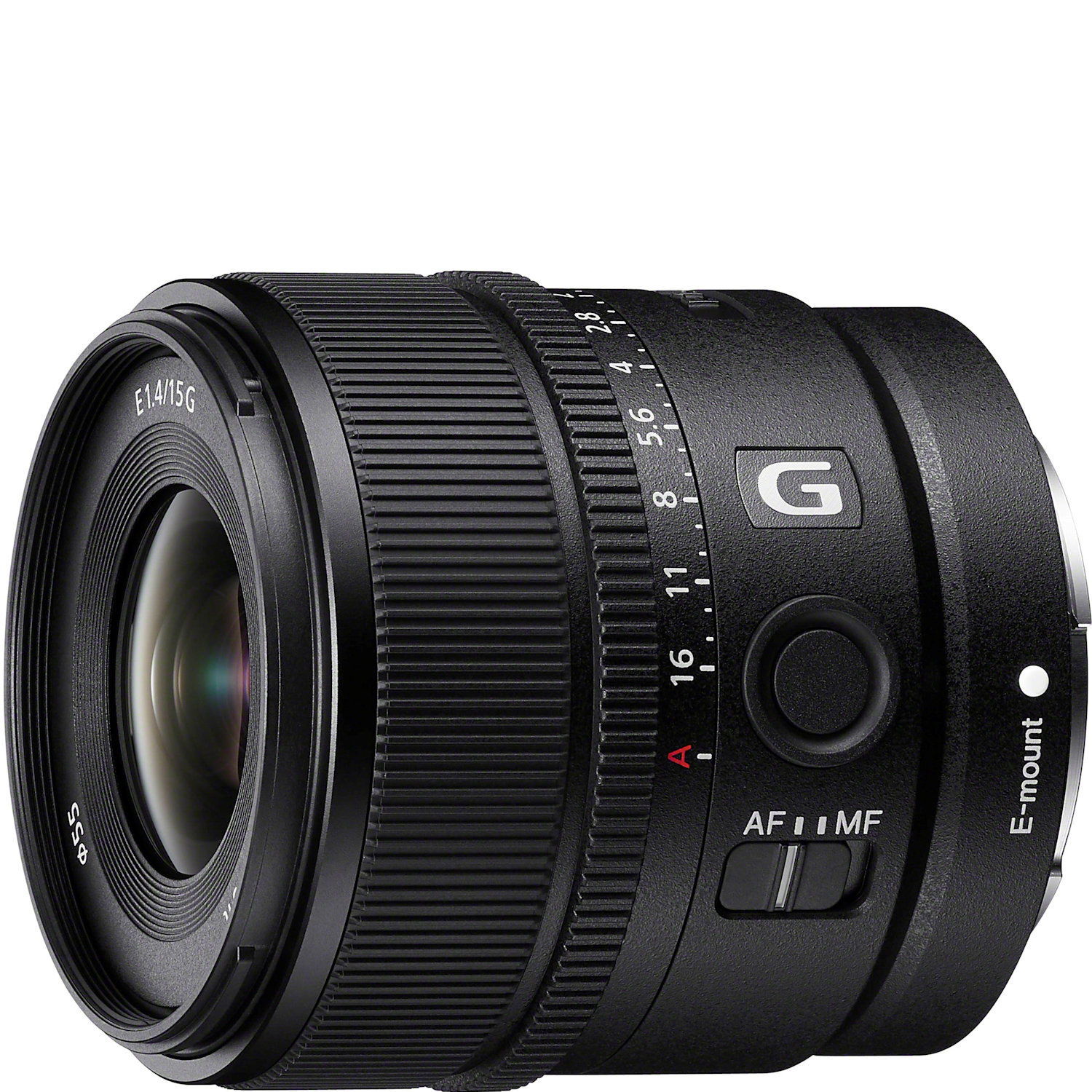
Designed for APS-C format Sony mirrorless cameras, this prime has an ‘effective’ focal length of 22.5mm. As such, it’s not enormously ‘wide-angle’ but is a great performer and has a particularly fast f/1.4 aperture.
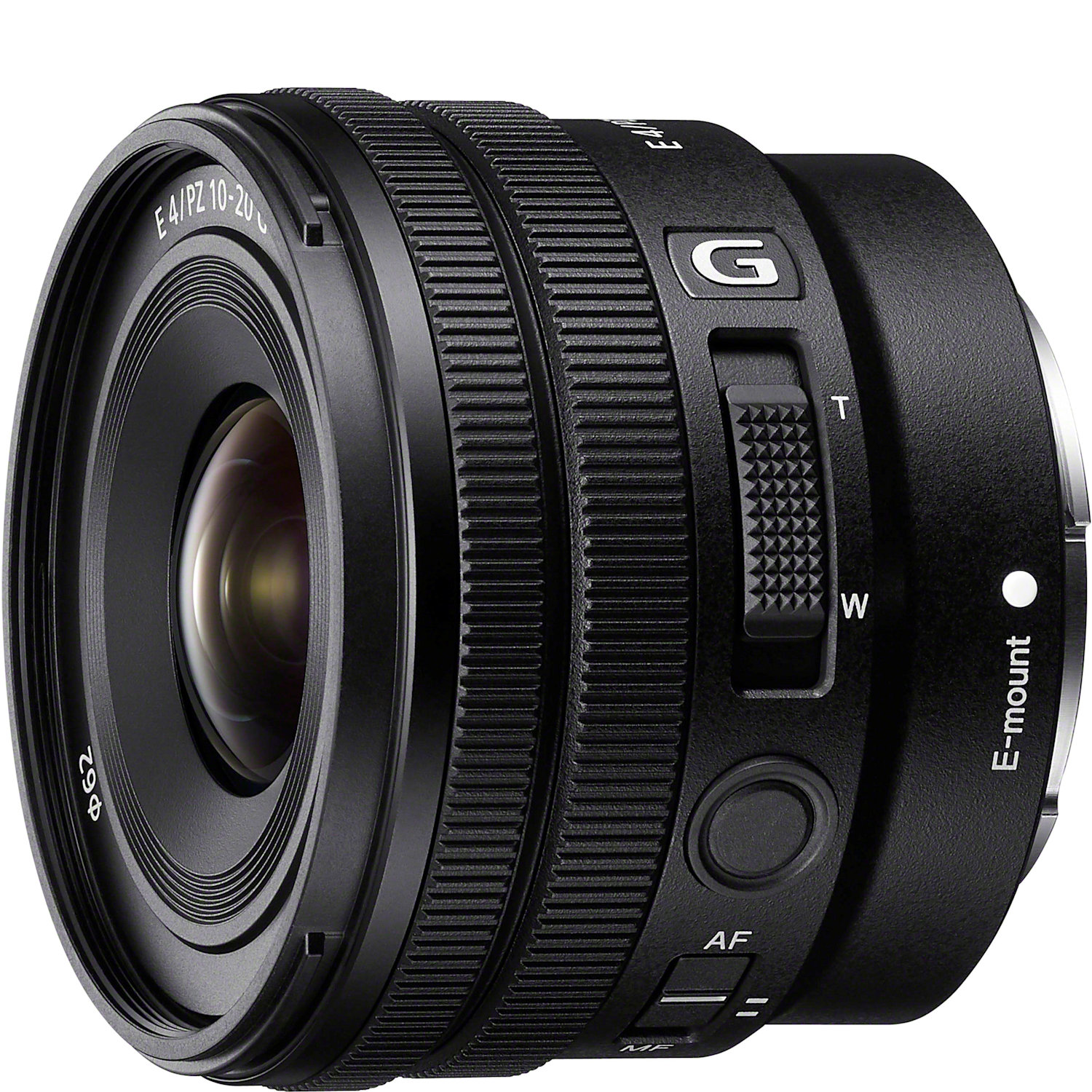
Ideal for shooting video and for vlogging with a Sony APS-C format mirrorless camera, this lens’s standout feature is its motorized ‘power zoom’ capability, coupled with an ‘effective’ zoom range of 15-30mm.
Best Sony wide-angle lenses
Why you can trust Digital Camera World
Best wide-angle zoom for pros
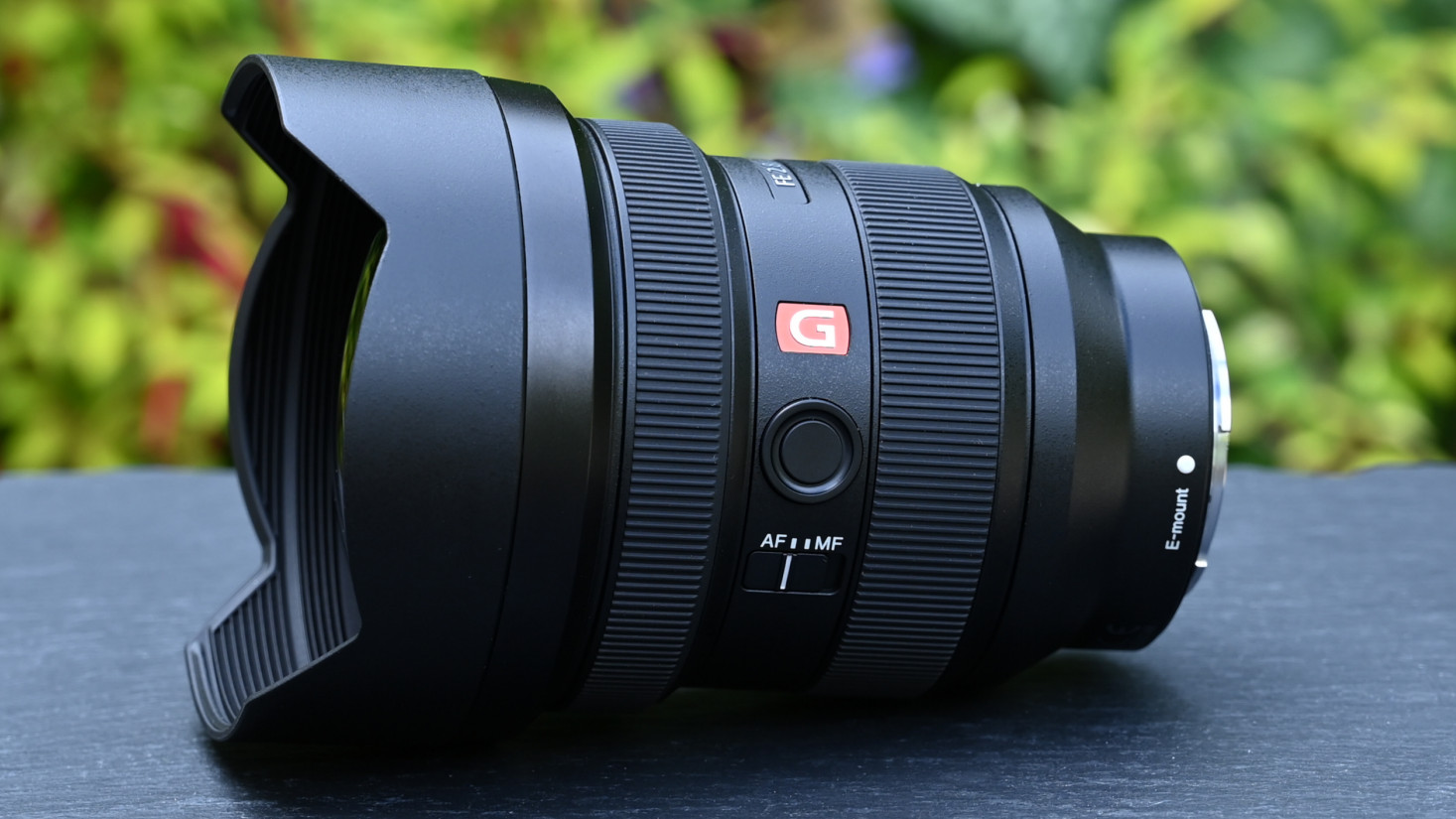
Specifications
Reasons to buy
Reasons to avoid
✅ You demand the very highest standards of build quality, image quality and are prepared to pay top dollar for a wide-angle zoom.
✅ You want the combination of a really wide maximum field of view, coupled with a fast f/2.8 aperture, ideal for shooting indoors and for astrophotography.
❌ You don’t feel for such an extreme maximum viewing angle. The excellent Sigma 14-24mm F2.8 DG DN Art matches the Sony for aperture rating but costs little more than half the price.
❌ You major on landscape photography and like to use filters. This lens has no front filter thread, only a gel filter slot at the rear.
I love the wow-factor that this lens delivers, as soon as I put my eye to the viewfinder. Most ‘trinity’ f/2.8 wide-angle zooms serve up a 14-24mm zoom range but this one goes even wider. 2mm in focal length might not sound a lot but the more expansive field of view is immediately obvious through the viewfinder. When this lens was launched, Sony already had a smaller FE 12-24mm F4 lens on the market, but I like the faster aperture of the newer model for freezing movement under dull lighting. It also gives more potential for blurring the background in close-up shots, especially towards the longer end of the zoom range. Bokeh is soft and dreamy, typical of G Master lenses.
I’m impressed that the lens is packed full of top-quality glass, including three XA (eXtreme Aspherical) elements that are manufactured to a tolerance of just one hundredth of a micron. The pay-off is superb sharpness for an ultra-wide-angle lens that extends right out to the edges and corners of the image frame. I also find that autofocus is very fast for a lens with such wide-diameter elements. That’s thanks to four high-speed XD (eXtreme Dynamic) Linear Motors, two for each of the pair of groups that move during focusing.
As with many ultra-wide-angle lenses, this one has an integral hood. As such, there’s no filter attachment thread but at least there’s a slot in the mounting plate for inserting gel filters.
Read more: Sony FE 12-24mm F2.8 G Master review
Best affordable pro wide-angle zoom
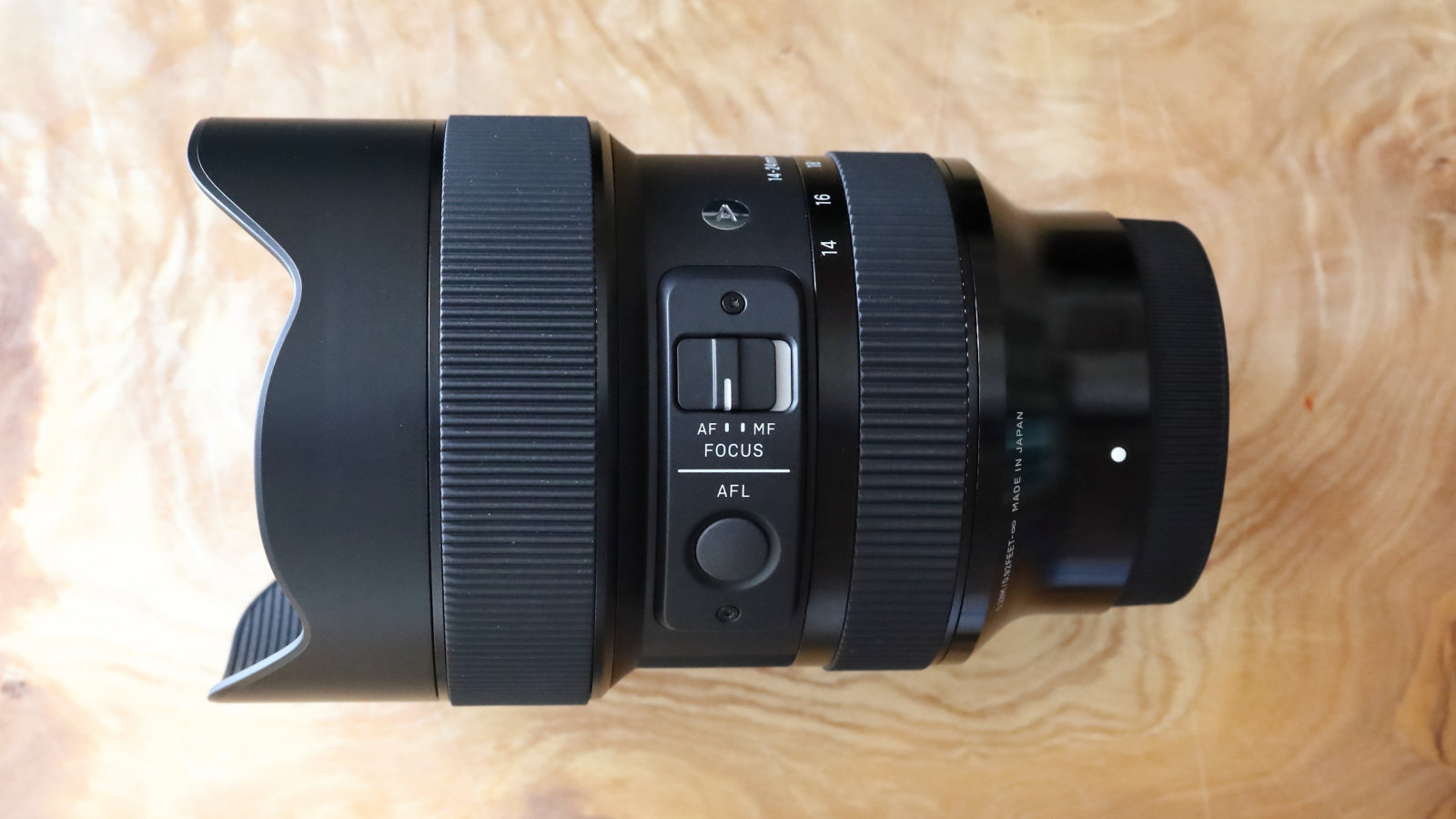
Specifications
Reasons to buy
Reasons to avoid
✅ You want a pro-grade ‘trinity’ wide-angle lens with the usual 14-24mm zoom range and constant f/2.8 aperture while being careful with your budget.
✅ You’re not fussed about the more regular 14-24mm zoom range, compared with the more expansive maximum viewing angle of Sony’s 12-24mm lens.
❌ You like using filters in your photography. As with many wide-angle zooms, this lens has no front filter attachment thread, although it does have a gel filter slot at the rear.
❌ You’d prefer a wide-angle lens that doesn’t rely on automatic in-camera correction for distortion, although they’re becoming increasingly hard to find in recent designs for mirrorless cameras.
I was a big fan of Sigma’s 14-24mm F2.8 lens for DSLRs and this E-mount version is even better. It’s redesigned from the ground up to make the most of Sony mirrorless cameras. Optical highlights include three aspherical elements, including a high-precision, large-diameter one at the front, an FLD (‘Fluorite’ Low Dispersion) element and no less than five SLD (Special Low Dispersion) elements. A significant addition is the use of NPC (Nano Porous Coating) as well as Sigma’s more conventional Multi-Layer Coating.
In practical terms, I’ve found that the lens delivers superb sharpness and clarity, even when shooting wide-open at f/2.8, throughout the zoom range. Color fringing is entirely negligible and there’s excellent resistance to ghosting and flare. Barrel distortion can be noticeable in the shorter half of the zoom range but there’s less reliance on automatic in-camera correction than with many recent lenses designed for mirrorless cameras.
Like most other recent Sigma Art and Sports lenses, this one has really solid build quality and is extensively weather-sealed. I like that AF-L (Autofocus Lock) button is featured and that I can customize it for other uses, via in-camera menus. All in all, this Sigma looks, feels and performs like a fully pro-grade ‘trinity’ zoom, but for about half the usual price. Bargain!
Read our full Sigma 14-24mm F2.8 DG DN Art review
Best affordable full-frame wide-angle zoom
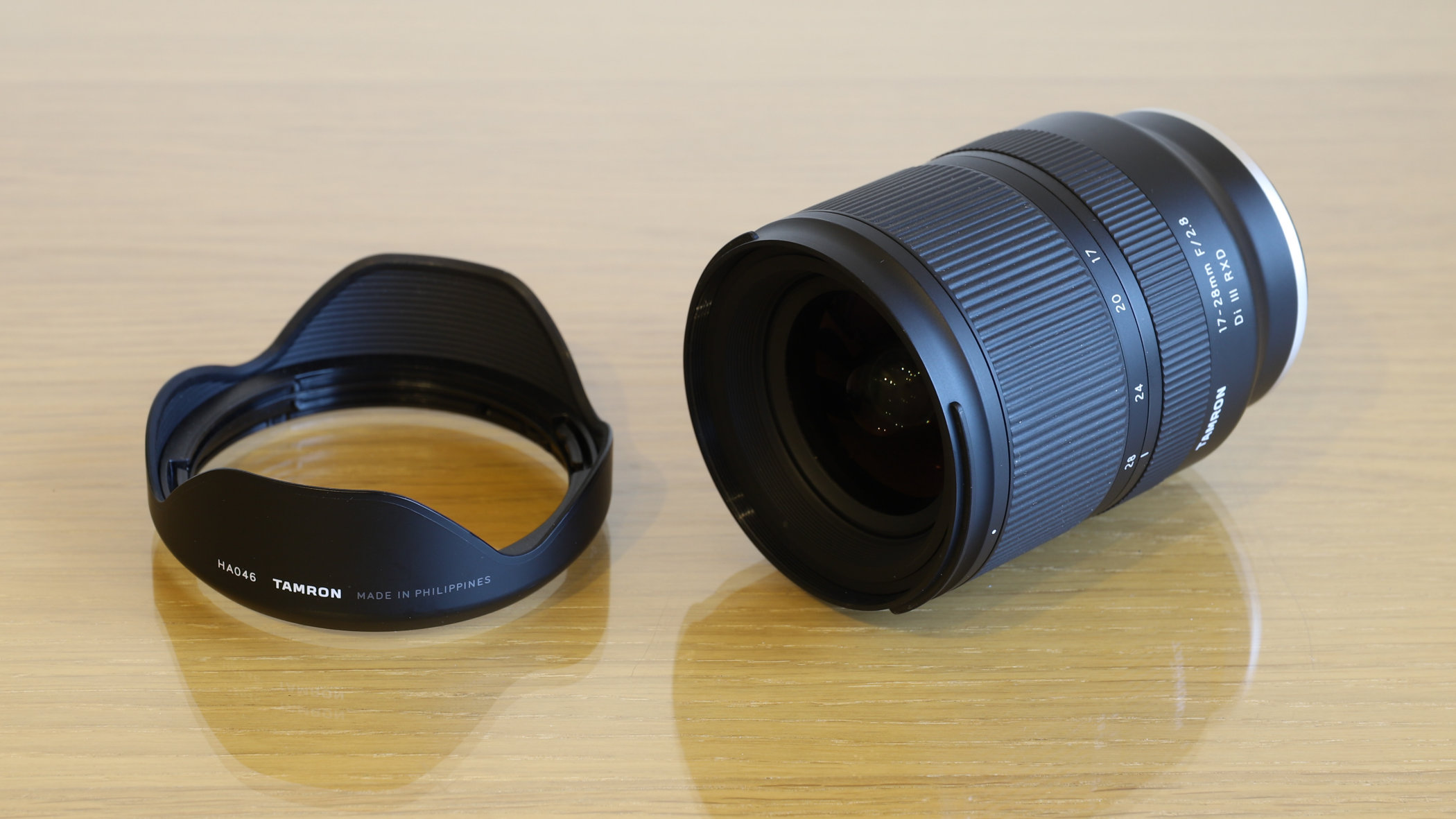
Specifications
Reasons to buy
Reasons to avoid
✅ You want a relatively compact, lightweight and affordable wide-angle zoom with a fast and constant f/2.8 aperture rating, ideal for wide-ranging shooting scenarios.
✅ You like using filters in your wide-angle photography. Unlike many wide-angle lenses with integral hoods, this Tamron has a separate bayonet-fit hood and includes a 67mm filter attachment thread.
❌ The shortest focal length of 17mm feels a bit restrictive to you. Other prime and zoom lenses give a more generous field of view.
❌ You’d rather have a wide-angle lens with more exotic handling characteristics, like an aperture control ring or an AF-L button.
I think this Tamron lens has a lot going for it. There’s no shortage of similar own-brand lenses, including the Sony Vario-Tessar T* FE 16-35mm F4 ZA OSS which is ‘slower’ but features Optical SteadyShot, and the Sony FE 16-35mm F2.8 G Master. A ‘trinity’ f/2.8 lens with a difference, the Tamron has a slightly more restrictive zoom range and marginally less maximum field of view, but it’s relatively compact, lightweight and sells for a much more affordable price. That ticks a lot of boxes on my wish list.
Although small and light, I like that the Tamron feels solid and well-built, and includes weather-seals. I also like its nippy RXD (Rapid eXtra silent stepping Drive) autofocus system, which I’ve found to be fast, virtually silent and consistently accurate. What matters most to me is image quality and the Tamron scored highly again in this respect. Corner-to-corner sharpness is excellent and there’s virtually no color fringing. Unusually for a wide-angle lens, there’s a little pincushion distortion in the longer half of the zoom range but automatic in-camera correction is available.
Especially for landscape photography, I feel that the inclusion of a front filter thread is a bonus. It means I can use the likes of neutral density and ND grad filters easily, and the 67mm thread is refreshing modest for a wide-angle lens.
Read more: Tamron 17-28mm F2.8 Di III RXD review
Best APS-C wide-angle zoom

Specifications
Reasons to buy
Reasons to avoid
✅ You want a compact and lightweight wide-angle zoom for your APS-C format Sony camera. This one measures 73x86mm and weighs 335g, making it easily manageable and travel-friendly.
✅ You want a relatively fast wide-angle zoom lens for the likes of indoor photography, nigh-time cityscapes and astrophotography. This one has a constant aperture rating of f/2.8.
❌ You’d rather have a motorized zoom mechanism for videography and vlogging. In that case you’re better off with the Sony E PZ 10-20mm F4 G, which we’ll come to later.
❌ You’d prefer an even faster aperture rating and don’t feel the need for a zoom facility. A prime lens like the Sony E 15mm F1.4 G would suit you better.
Sony’s APS-C format cameras tend to be small and lightweight, and I like that this E-mount lens follows suit. Weighing in at just 335g, it feels beautifully balanced on slimline Sony bodies and I like that the 11-20mm zoom range delivers good wide-angle coverage, equivalent to 16.5-30mm in full-frame terms. Another bonus for me is the relatively fast and constant f/2.8 aperture, which I find extends the versatility of the lens.
I feel that build quality and handling are very good. The Tamron features weather-seals and comes with a bayonet-fit petal-shaped hood. I find it useful that, unlike with many wide-angle lenses, I can easily attach filters via the 67mm attachment thread. Autofocus is fast and virtually silent, as I’d expect from a stepping motor-based system. However, there’s no optical image stabilizer, which can be a concern as so many APS-C format Sony mirrorless cameras don’t have in-body stabilization.
Another think I like about this lens is its short minimum focus distance of just 0.25m at the wide-angle end of the zoom range, although it stretches to 0.24m at the long end. Either way, I can get in really close to subjects and exaggerate perspective at wide-angle zoom settings. As with many wide-angle lenses, lab test results don’t flatter the Tamron but in real-world shooting conditions, I found sharpness very impressive across the whole image frame, right into the corners. There’s some reliance on automatic in-camera correction for distortion but, unlike many recent wide-angle lenses for mirrorless cameras, it’s not wholly dependent on correction.
Read more: Tamron 11-20mm F2.8 Di III-A RXD review
Widest angle possible
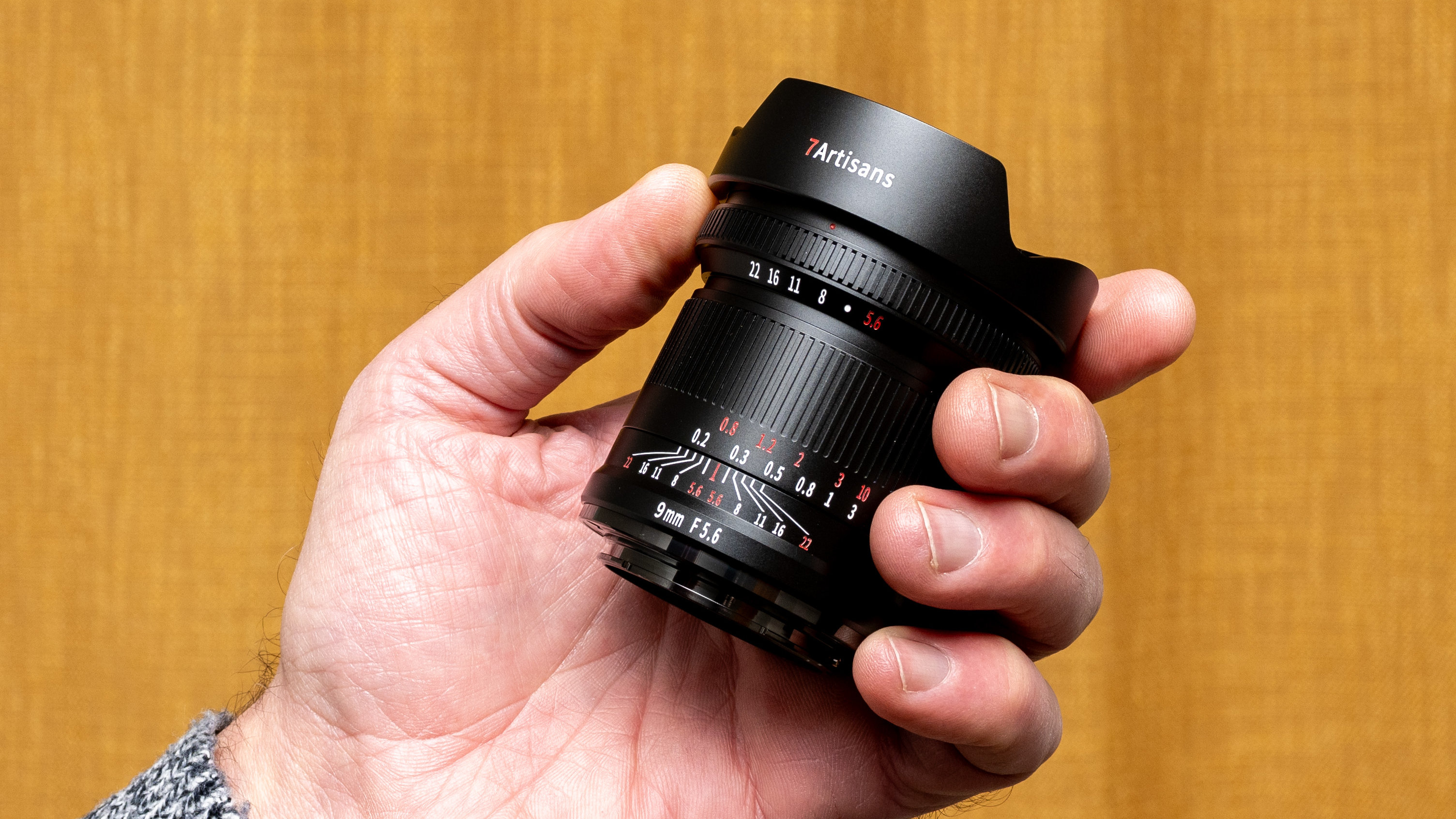
Specifications
Reasons to buy
Reasons to avoid
✅ You want a really massive field of view for capturing as much of a scene as possible. This 7Artisans lens is pretty much unbeatable, unless you go for a fisheye lens, which is a different kind of beast altogether.
✅ You don’t mind focusing manually and setting the aperture via the lens, which rules out shooting in Program (automatic exposure) and Shutter-priority modes.
❌ You prefer the convenience of an autofocus lens and want to store lens-based EXIF data in your image files. As expected with such a wide-angle lens, there’s also no filter attachment thread.
❌ If you’re into astrophotography, the extra-wide viewing angle might come in handy but the relatively slow f/5.6 aperture rating makes the lens a bit too slow for starry nights.
I think this lens is quite astonishing. At first glance, I assumed it was an APS-C format lens, due to its super-short focal length and small size. But no, it’s a full-frame compatible lens. Digging a little deeper, I’ve found that it’s a conveniently compact and lightweight lens that bears some heavyweight credentials. Despite its 9mm focal length, it’s a rectilinear rather than curvilinear (or fisheye) lens, shoehorning an epic 132-degree viewing angle into its small build. When I put my eye to the viewfinder it really feels like taking the blinkers off my photography.
I like the solid metal construction, which extends to a metal integral hood and slip-on metal cap. Naturally though, the built-in hood precludes the use of filters. Not just a manual-focus lens, it’s fully manual and includes no electronics whatsoever. As such, you need to adjust the aperture via the onboard control ring rather than from the camera body, and no lens-based EXIF information is saved in image files.
On the plus side, I find that focusing is quick and easy. The focus ring works with smooth precision and the enormous depth of field means I don’t have to be painstakingly accurate, even at the lens’s widest aperture of f/5.6. At the price, it’s a nicely crafted and very useful kit bag addition for capturing sweeping vistas in landscape photography, architectural interiors when space is tight, vlogging when you want to set yourself in an expansive scene, and a lot more besides. I really like it.
Read more: 7Artisans 9mm F5.6 review
Best professional wide-angle prime lens
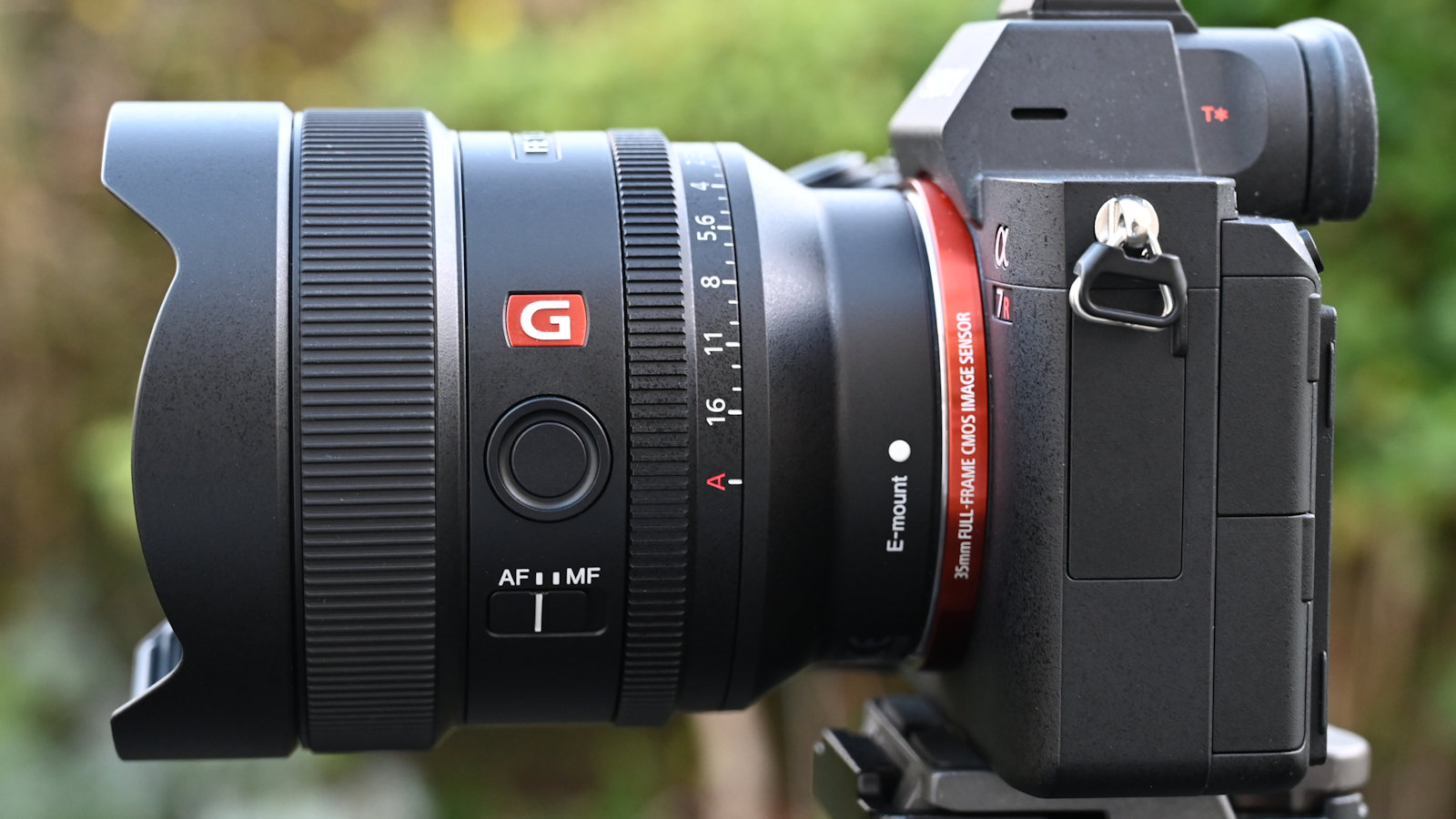
Specifications
Reasons to buy
Reasons to avoid
✅ You favor the short end of a 14-24mm wide-angle zoom lens and would rather have a faster f/1.8 rather than f/2.8 aperture rating, more ideal for astrophotography and night-time cityscapes.
✅ You want a lens with ‘hands-on’ controls for the likes of setting the aperture, complete with click and de-click options, plus a customizable function button.
❌ You’d prefer the versatility of a zoom lens, instead of being stuck with one focal length. In that case, you’d be better off with one of the zooms featured in this guide.
❌ You’re sticking to a budget. Although this is a fabulous lens, it’s undeniably pricey to buy, as is generally the case with Sony’s top-end G Master lenses.
I love that this Sony lens is so compact and lightweight for an ultra-wide-angle, full-frame compatible lens with such a fast f/1.8 aperture rating. Even so, there’s a lot packed in when it comes to handling exotica and all-round performance. I’ve found that the electronically-coupled manual focus ring has a smooth and precise action with a linear response that’s well suited to both stills and video shooting. A further bonus for video is that the manual aperture ring can be de-clicked via a switch on the right hand side of the barrel. On the left, there’s an AF-MF focus mode switch and a function button which is nominally for AF Hold, but you can customize its action via in-camera menus.
Build quality feels very solid for such a lightweight lens and extensive weather-seals are fitted to all the joints, mounting plate, switches and buttons. Florine coatings are applied to the front and rear elements. Although small, the lens packs 14 optical elements. Specialist glass includes two ED (Extra-low Dispersion) elements, one Super ED element and two high-precision XA (eXtreme Aspherical) elements, plus a regular aspherical element. The mix intends to maximize sharpness, contrast and clarity while keeping aberrations to a minimum. Nano AR Coating II is also applied to minimize ghosting and flare.
I found that sharpness is superb, right out to the extreme corners of the frame, even when shooting wide-open at f/1.8. There’s also remarkably little coma and astigmatism. That’s great news for astrophotography and shooting nighttime cityscapes, as it ensures that stars and pinprick lights don’t take on irregular shapes towards the edges and corners of the frame, especially when shooting at the widest aperture.
Read more: Sony FE 14mm F1.8 G Master review
Best affordable full-frame wide-angle prime

Specifications
Reasons to buy
Reasons to avoid
✅ You’re after a high-quality prime lens at a competitive price. The f/2 aperture rating is slightly slower than f/1.8 but helps to keep the size and weight to a minimum.
✅ You want a lens with a high-quality look and feel. The metal construction feels super-solid and the aperture control ring enhances handling.
❌ You’re after a lens for shooting video rather than stills. The inability to switch the aperture ring to ‘de-click’ operation for smooth adjustments can be a frustration.
❌ You want an ultra-wide-angle lens. The 20mm focal length gives a field of view that can feel a little restrictive compared with many other lenses, but it’s still noticeably wider than a standard zoom lens at its 24mm setting.
The Sigma 20mm F2 DG DN | C joins a growing range of fairly fast primes for Sony E-mount cameras, in Sigma’s ‘I-series’ range. I like that the look and feel of the lenses is so consistent across the range, which includes 24mm, 35mm and 65mm F2 DG DN | C options, as well as a slower 45mm F2.8 lens. For me, the ‘Contemporary’ design ethos works well in delivering excellent performance with a compact and lightweight build.
I’m impressed that there’s some impressive glass shoehorned into the diminutive construction, with 13 elements in total that include three high-precision glass-molded aspherical elements, one SLD (Special Low Dispersion) element and one top-spec FLD (‘Fluorite’ Low Dispersion) element. Sigma’s conventional Super Multi-Layer Coating and more high-tech Nano Porous Coating are both employed, to fend off ghosting and flare.
As with other lenses in Sigma’s I-series Contemporary line-up, I like the build quality which is based on a coated brass mounting plate, a metal barrel and even a metal lens hood and lens cap, the latter of which is magnetic. A more regular plastic lens cap is also supplied in the box. The construction features multiple weather-seals and is dust- and moisture-resistant. Handling is enhanced by an aperture control ring which operates in one-third f/stop increments, but there’s no ‘de-click’ option. Sharpness is very good but automatic in-camera correction comes in useful to reduce distortion and wide-aperture vignetting.
Read more: Sigma 20mm F2 DG DN | C review
Best APS-C wide-angle prime
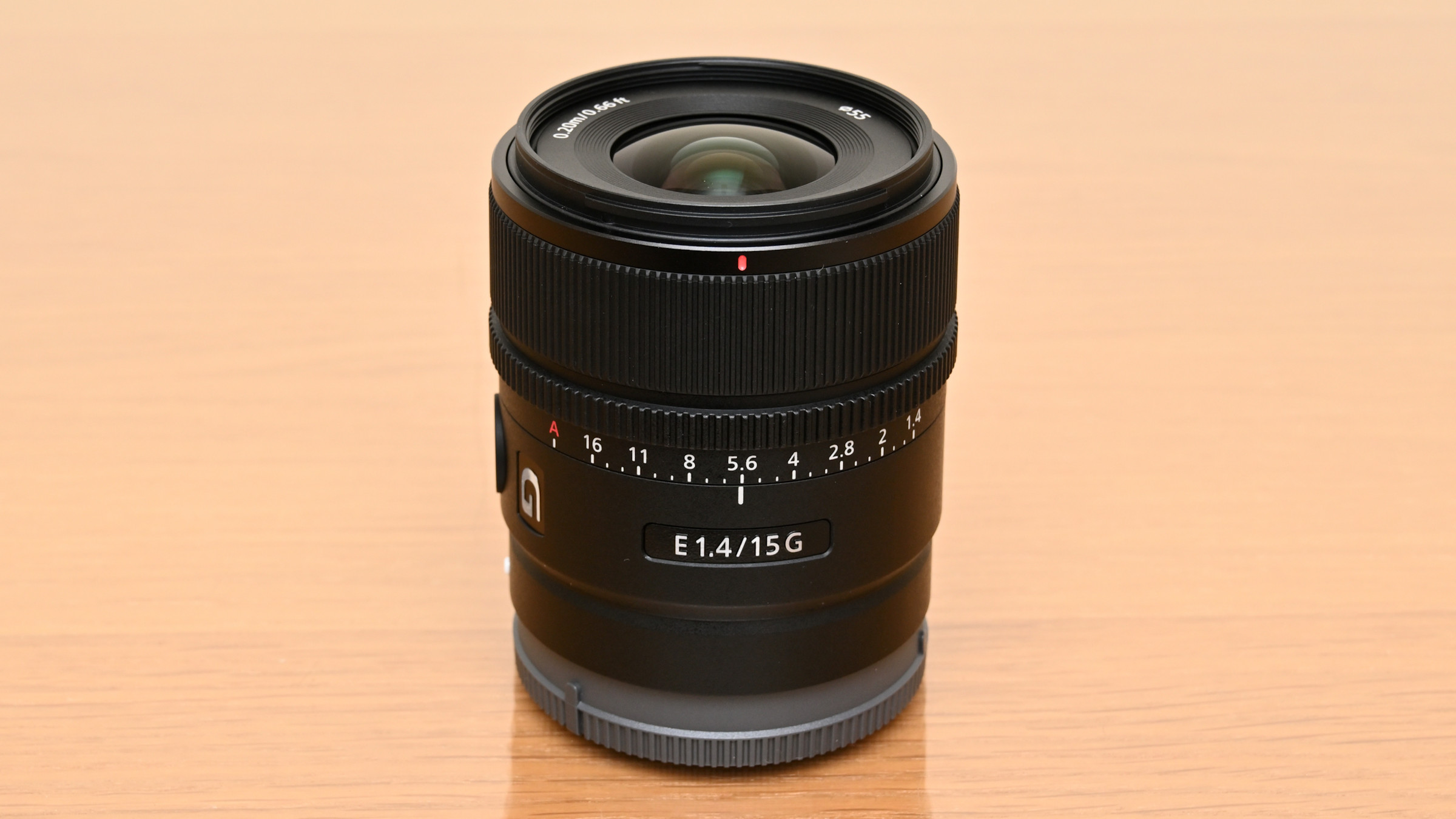
Specifications
Reasons to buy
Reasons to avoid
✅ You want a wide-angle prime lens for your APS-C format Sony camera with a really fast aperture rating, ideal for freezing motion and for shooting in very low lighting conditions, as well as for gaining a tight depth of field for close-ups.
✅ You like to travel light and want a fast wide-angle lens that’s surprisingly compact and lightweight for its type.
❌ You’re prone to accidentally nudging an aperture ring from its ‘auto’ setting, as there’s no switch to lock it in place.
❌ You’d rather have a more expansive viewing angle. With an ‘effective’ 22.5mm focal length in full-frame terms, the field of view of this lens can feel a little cramped.
I like that this APS-C format lens for Sony E-mount mirrorless cameras has an effective focal length of 22.5mm in full-frame terms. Sure, it’s not overly wide-angle but delivers a good compromise between the 20mm and 24mm focal lengths that I often use with full-frame cameras. And it does so in fine style, with a sturdy yet compact and lightweight build, refined handling characteristics and superb all-round performance. ‘G-series’ extras include an aperture control ring, complete with a click/de-click switch, and a customizable function button. A key attraction for me is the fast f/1.4 aperture rating.
Despite its small size and diminutive 219g weight, the lens packs 13 elements, including three aspherical elements, one ED (Extra-low Dispersion) element and one fluorite-grade Super ED element. Autofocus is driven by two linear stepping motors that are super-fast for stills as well as enabling smooth and silent focus transitions when shooting video. Build quality feels excellent and I’m pleased that the lens features multiple weather-seals around the mount, barrel sections, switches and function button.
Sharpness is excellent even at f/1.4, with remarkably good edge/corner-sharpness for a wide-angle lens with such a fast aperture. Color fringing is negligible and vignetting isn’t too bad, again considering the lens is physically so small. The only real downside is that barrel distortion is severe and relies heavily on automatic in-camera correction, as is increasingly the case with modern wide-angle lenses designed for mirrorless cameras.
Read more: Sony E 15mm F1.4 G review
Best wide-angle lens for video
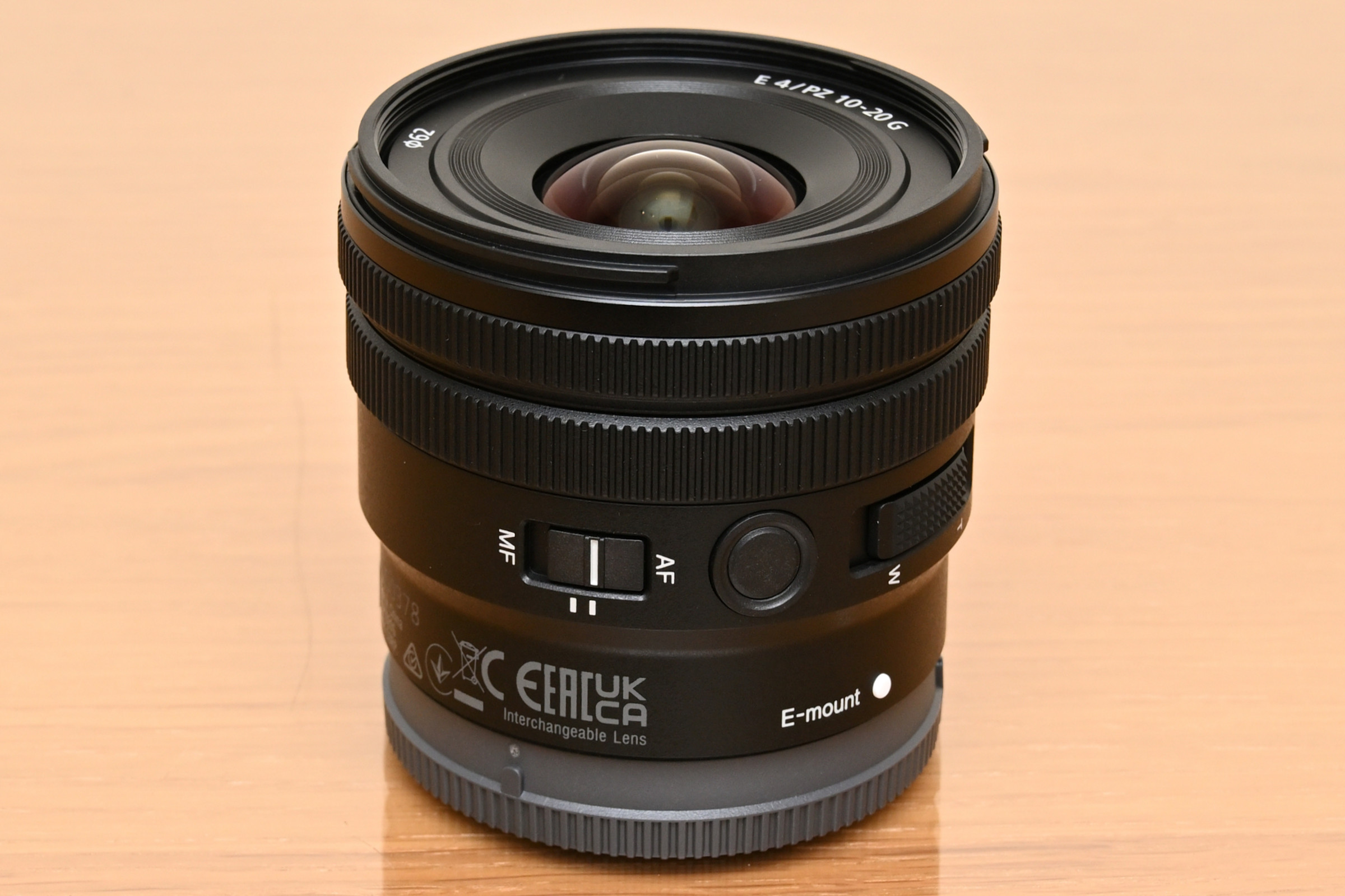
Specifications
Reasons to buy
Reasons to avoid
✅ You want a motorized zoom facility for shooting videos and for vlogging. The one on this lens works particularly well and the ability to control it from your mobile phone is a bonus.
✅ You’d like a wide-angle zoom for your APS-C format Sony camera that’s particularly compact and lightweight. This one’s a real featherweight, tipping the scales at just 178g.
❌ You only tend to shoot stills. Although particularly intuitive and responsive for a power zoom lens, the motorized mechanism is still less than ideal for stills rather than video capture.
❌ You don’t mind your zoom lens being a little bigger and heavier, and would rather have one with a faster f/2.8 aperture rating.
The first thing that hit me about this wide-angle zoom lens for Sony’s APS-C format mirrorless cameras is just how small it is. To me, it feels much more the size and weight of an ultra-compact standard kit zoom lens with a variable (and slow) aperture rating. The fact that Sony has managed to shoehorn such an expansive range of viewing angles with a constant f/4 aperture into such a small lens, complete with motorized zoom, really is quite something. Especially as image quality and overall performance are so excellent.
I find that the silent power zoom facility makes the lens ideal for vlogging and general video shooting, but it’s equally adept at capturing stills of anything and everything from architectural interiors to sweeping landscapes, or just for exaggerating perspective effects. The electronically coupled zoom ring feels wonderfully responsive, seamlessly converting the speed and amount of rotation to the resulting focal length. I also like the additional zoom lever that enables constant-speed adjustments right down to super-slow movements, ideal for avoiding jerky zoom transitions when shooting movies. I’m also pleased that there’s an optional grip and remote controller, plus a free app for controlling everything from my mobile phone.
Although really small, the lens feels very solid and well-built, and includes multiple weather seals around all the joints, buttons and switches. Handling refinements include an AF/MF focus mode switch and a customizable focus hold button. I’m a bit disappointed that the lens lacks an aperture control ring, for which a de-clicked option would have been nice when shooting movies, but there’s only so much you can squeeze into such a small lens.
Read more: Sony E PZ 10-20mm F4 G review
How to choose
Prime or zoom?
Sometimes it’s hard to decide whether a zoom lens or a prime lens will be a better buy. Zoom lenses tend to be more versatile, as they cover a broad spread of focal lengths. However, there’s a lot to be said for prime lenses, which generally have a wider or ‘faster’ aperture rating and are often relatively small and lightweight. Some photographers find that they only tend to use wide-angle zooms at or near their shortest focal length anyway, which is another reason for considering a prime lens.
Do I need speed?
If you’re mainly using a wide-angle lens for landscape photography, you won’t need one with a really fast aperture rating, and an f/5.6 lens should suffice. That said, most of the lenses in this buying guide have aperture ratings of f/2.8 or faster. That’s a real bonus for astrophotography, for which wide-angle lenses are particularly well suited, as well as for shooting architectural interiors under low indoor lighting, and for night-time cityscapes.
How do I tell if a lens is full-frame compatible?
It can be tricky for the uninitiated to recognize the difference between Sony lenses that are made for full-frame or APS-C format cameras. The clue is in the title. APS-C format lenses have an ‘E’ prefix, whereas full-frame compatible lenses have an ‘FE’ prefix. Sigma designates its lenses as ‘DC’ for crop-sensor cameras and ‘DG’ for full-frame. Bear in mind though, that you can shoot with E lenses on full-frame cameras in crop mode, and with FE lenses on APS-C cameras with no limitations.
What’s the APS-C crop factor?
Sony’s APS-C cameras have an image sensor that’s the same size as a frame of ‘Advanced Photographic System type C’ film. That’s quite a bit smaller than a frame of 35m film, on which full-frame digital cameras are based. The outcome is that the ‘crop factor’ gives a 1.5x magnification in the focal length of lenses. For example, a 10mm wide-angle lens will give the same field of view as using a 15mm lens on a full-frame camera.
Do I need OSS?
Optical SteadyShot can be really useful if your Sony camera doesn’t feature IBIS (In-Body Image Stabilization). It’ll help counteract the effects of camera-shake and ensure you get sharp handheld shots more consistently with slow shutter speeds. However, OSS is generally not featured on wide-angle lenses, as camera-shake is less of a problem in handheld shooting compared with standard and telephoto lenses.
How we test
We test lenses using both real-world sample images and lab tests. Our lab tests are carried out scientifically in controlled conditions using the Imatest testing suite, which consists of custom charts and analysis software that measures resolution in line widths/picture height, a measurement widely used in lens and camera testing. Our lab tests also reveal the extent of color fringing and distortion. We find the combination of lab and real-word testing works best, as each reveals different qualities and characteristics.
You can find out more about how we test and review on Digital Camera World.
Get the Digital Camera World Newsletter
The best camera deals, reviews, product advice, and unmissable photography news, direct to your inbox!
Matthew Richards is a photographer and journalist who has spent years using and reviewing all manner of photo gear. He is Digital Camera World's principal lens reviewer – and has tested more primes and zooms than most people have had hot dinners!
His expertise with equipment doesn’t end there, though. He is also an encyclopedia when it comes to all manner of cameras, camera holsters and bags, flashguns, tripods and heads, printers, papers and inks, and just about anything imaging-related.
In an earlier life he was a broadcast engineer at the BBC, as well as a former editor of PC Guide.
